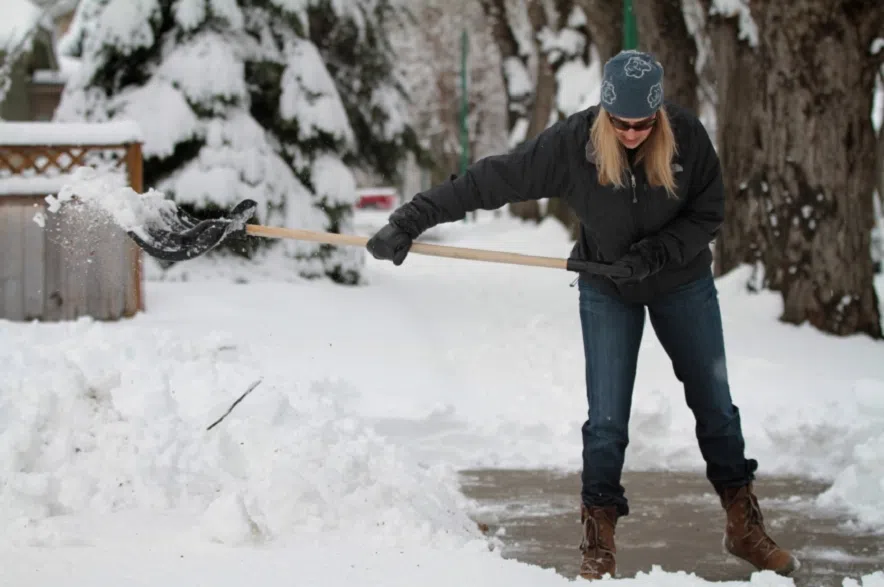The Alberta Clipper has made its way out of the province, leaving a trail of blowing snow behind it.
With many people moving big piles of snow as they clean up after the storm, Medavie is reminding everyone to think of safety before clearing their driveways and sidewalks
Troy Davies, with Medavie Health Services West in Saskatoon, explained that shovelling is a strenuous activity that can be comparable to weight lifting. He said those with underlying medical conditions should be careful when picking up a shovel.
“This type of windblown snow is the absolute worst for anyone with a cardiac condition (or) any previous cardiac events,” he said.
Davies said Medavie has already responded to two calls related to shovelling and cardiac issues since Monday, and predicted the ambulance service will likely receive a few more calls in the days following the storm.
He advised anyone experiencing shortness of breath or chest pain while shovelling to stop altogether, and said anyone with significant cardiac history should not be shovelling at all.
“It sounds ridiculous, but even warming up and stretching before you go out to shovel can avoid some major injuries,” Davies said, adding that pacing yourself and taking frequent breaks is also important.
The organization also emphasized the importance of good technique when lifting heavy snow.
“Always bend your knees when lifting the shovel and keep it close to you to avoid pressure on your back,” Medavie said in a release.
Medavie also advised shovellers to bundle up in layers, watch out for ice, and to always carry a phone so 911 can be called immediately in case of an emergency.
When it comes to snowblowers, Medavie said it’s important to make sure it the machine is turned off before trying to clear any snow jams.











